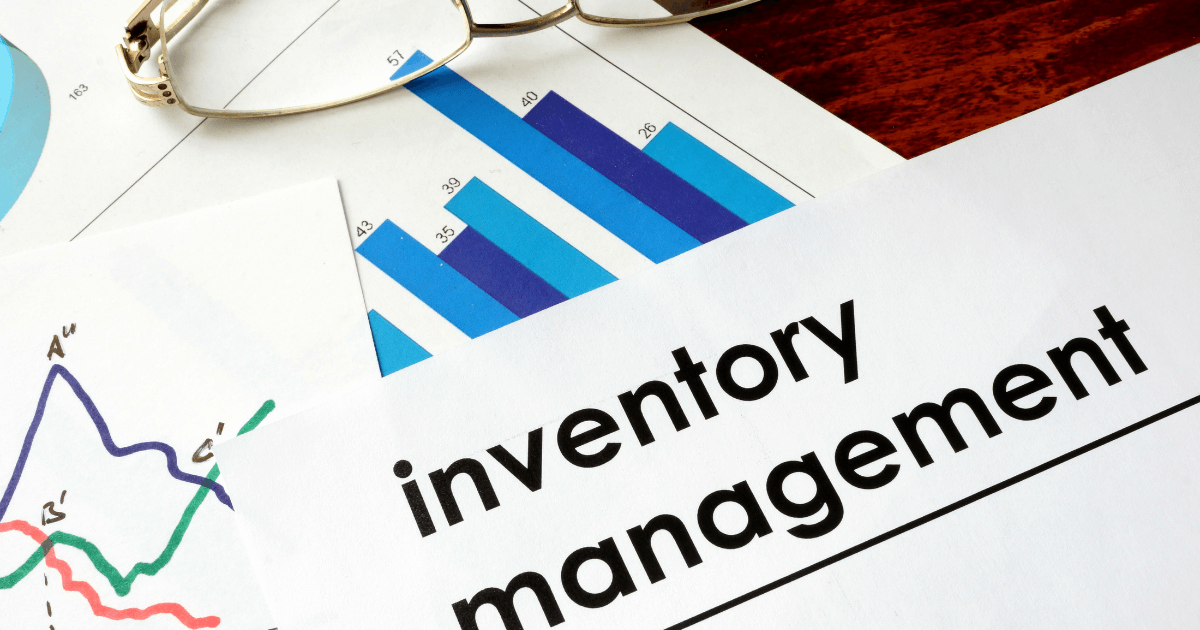Efficient Inventory Management Strategies For Small Retail Businesses
Small retail businesses need effective inventory management to be successful.
For a bricks and mortar retailer, proper inventory management is one of the key strategies to increase sales, generate cash and create more time freedom.
When you can properly manage your inventory, this helps to reduce costs, optimize your cash flow management (yes, inventory and cash flow are closely linked to one another!) and it makes sure that you have enough inventory on hand to handle customer demands.
Efficient inventory management for small retailers comes in many forms, so it is vital to explore the options to choose the methods that will work the best for your store.
Effective inventory management for small retailers involves controlling, overseeing and optimizing the inventory of products in your retail store.
The primary goal is to make sure that you have enough inventory to meet customer demands at any given time without overstocking.
There are several elements of inventory management for retail store owners:
Tracking your inventory via specialized systems or you can do it manually
Replenishment planning so that you have enough inventory on hand without having too much
Demand forecasting so that you can accurately plan inventory levels
Supplier management so that you can maintain good relationships with your suppliers
Stock rotation so that older inventory gets sold first
Just-in-time inventory to get new inventory only when you actually need it
Inventory valuation so that you can better estimate the value of your current inventory
ABC analysis so that you can place the right value or level of importance on your inventory
Safety stock so that you have an inventory buffer for unexpected increases in sales
Inventory auditing so that you can keep an accurate count of your on-hand inventory
Inventory turnover so that you can see how often items are replaced or sold in a specific period
Software and technology allowing you to better handle your store's inventory management
Inventory Management vs. Order Management
It is important to differentiate between these two concepts because the terms are often used interchangeably.
The primary focus on inventory management is to optimize and control the physical products in your store.
The primary focus of order management is the steps involved in the ordering process, including processing, receiving and tackling customer orders.
Order management is a part of inventory management because inventory management encompasses all of the elements of your store's inventory.
Retail stores need to keep items in stock to keep customers coming through the door. The easiest way to do this is via proper inventory management.
Knowing how important this is will help retail store owners to see why they need to implement this type of system.
With an effective inventory management system for small retailers, you will have adequate stock to satisfy customer needs, but you will not end up with excess stock that you are unable to move.
This allows you to strike a balance so that you are minimizing your carrying costs and not tying up valuable storage space.
When you are storing your inventory, you are paying different holding costs, such as insurance, storage fees and financing charges. When you efficiently manage your inventory, you will not need to carry more than you actually need.
This can help to reduce holding costs while simultaneously improving profitability.
You always want to be able to meet customer demand for all of the items in your store. This will prevent stock outs which can cost you money in the long run and make your customers unhappy. When you always have what your customers want, this will also increase customer loyalty and trust.
You know that changing seasons means different demands for the items that you offer. With proper inventory management, you can anticipate these changes so that you have the items available when the customer need increases. This will also help you to reduce how much you order for items that are less popular during certain times of the year.
You can avoid issues with deadstock when you manage your inventory properly. There are times when some of your items simply become obsolete or they do not sell. When you are using an inventory management system, you will be able to quickly identify what these items are so that you can take corrective action.
The Annual Retail Theft Survey conducted by Hayes International found that 81% of Retailers experienced an increase in shrink!
Reduce shrinkage at your store by knowing what you have in stock at all times. With the right system in place, you can do routine audits and see if anything is coming up missing or if there are any recording errors regarding your inventory numbers.
With the right inventory management for small retailers, it is easier to establish better relationships with your suppliers. You can track what you need easier so that you know when it is time to order new stock. This also puts you in a position to negotiate better terms with them so that you might save some money in the long run.
There are inventory management systems that make it easier to create marketing campaigns. For example, you can track information like product performance, sales trends and customer preferences. This will help you to decide when to do things like run promotions, adjust prices or even bring new items into your retail store.
Managing your inventory effectively allows you to better manage your cash flow in business. When you are not spending extra money on items you do not need, you can direct this cash elsewhere in your business.
There are several methods that allow for better inventory management for small retailers. Exploring these strategies will help you to decide which ones make the most sense for your store. You can use more than one method to best keep an eye on your inventory.
Prioritize Inventory Analysis
Check your sales data and analyze it regularly. This will help you see which products are performing well and which ones are not. Use this information to make sure that you are stocking your best sellers well and adjusting the stock of the items that are low performers.
Utilize Inventory Management Software
There are different software options available that allow you to manage your inventory in one place. You can find several options that are specific for small retail businesses. With this type of software, you can do things like monitor sales trends, track your stock and keep an eye on your reorder points.
Set Reorder Points
Use your lead times and historical sales data to determine the right reorder points for every item that you stock. You can see when the level of your inventory reaches the point where you need to reorder so that you can contact your supplier.
Take Advantage of ABC Analysis
This method for inventory management for small retailers is where you use three categories to put your store's items into. A will be the highest value, so on and so forth. You will spend the most time managing the items in the A category since these are the ones that will usually create the most revenue for your store.
Consider Dropshipping
If your retail store also sells products online, dropshipping can be a way to better manage this element of your business. With this method, you do not have to hold any of the physical inventory. You can also increase the products that you offer online without crowding any space in your store. Once a customer places an order online, simply order their products and the supplier will ship it to them directly.
Keep Some Safety Stock
As you learn more about your inventory, you will be able to see patterns when certain items have a spike in sales. Since these patterns are not regular, you never know when you might need the extra stock. Once you identify the items that are prone to this, you can keep some extra stock for these particular goods so that you can handle unexpected influxes in orders.
Implement Cycle Counting
Cycle counting is an inventory management for small retailers' technique that prevents you from needing to do physical counts of your inventory. On a rotating basis, you will count only some of your inventory. This will help you keep an accurate assessment of your stock levels.
Seasonal Inventory Planning
During the holidays, you tend to sell more items since people are engaging in holiday shopping. You will also have some items that are more popular than others. For example, if your store sells things like holiday decorations or toys, you can expect an increase in your sales of these products around the holidays. You will need to adjust your plan for inventory so that you do not run out of the most in-demand items in the middle of the holiday shopping rush.
Audit Your Inventory
If you are using software to manage your inventory, or your employees are doing it, you should take some time each year to do a physical audit yourself. As part of your regular retail audits, this will help you to keep an accurate count of what you have available and take care of any discrepancies.
Implementing these techniques allow for efficient inventory management for small retailers. With market competition getting higher every day, it is imperative that you are able to meet your customer demands. You can expect a healthier bottom line when you have your inventory in check.
Need some help implementing these strategies in your store?
Schedule a call today to take advantage of these strategies in your store.
Watch a video about inventory management for small retailers




